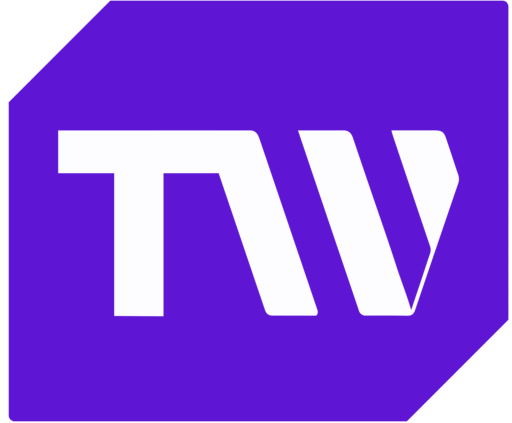Building Credibility: The Role of Educational Content in Web3 Marketing
We live in an information-driven age where the rapid dissemination of knowledge is more crucial than ever. With social media and breaking news, information can instantly reach millions. However, this also means that misinformation proliferates just as swiftly. While information can shape industries, drive innovation, and fuel growth, it can spark chaos.
The stakes are particularly high in sectors like Web3. Misleading information pointing towards protocol vulnerability or unverified claims can damage user trust or lead to project setbacks. Notably, incidents such as fake airdrop announcements highlight the urgent need to provide clear, concise, and accurate information.
For newcomers, the entire system can seem like a chaotic maze. However, surviving and ultimately thriving in this space can pose a challenge. Educational content comes in as a vital tool to navigate these challenges. Web3 companies that prioritize educational content establish themselves as trusted authorities.
Let’s break down how Web3 companies can effectively leverage this strategy to build credibility.
Why Credibility Matters in Web3 Marketing
Credibility as a significant influence on Web3 investors’ decisions
In Web3, credibility is more of a necessity than a virtue. As Seth Godin aptly says, “In the digital world, credibility is the new currency.” In Web3, where there are promises of trustless systems and democratized access, credibility is the difference maker.
Yet, the human side of adoption still heavily depends on trust. No one investor will look to invest in any company with an unverified track record. That’s why credibility is the cornerstone of Web3 marketing.
Here are a few reasons why credibility is a big deal for the Web3 space:
- Scam Prevention: Web3’s promise of freedom and innovation is often overshadowed by specters of scams and deceit. An instance is the 2022 “Squid Game” token rug-pull that wiped out over $3.38 million in user funds. With regulatory frameworks lagging, credibility becomes critical in helping users distinguish genuine projects from malicious ones.
- Trust Minimization: Trust minimization and credibility are Web3’s twin pillars. In a decentralized environment, users must depend on code and algorithms rather than centralized authorities. Credibility serves as a bridge to foster this necessary trust. Projects like Ethereum have shown the importance of strong decentralized systems, which increase user trust.
- Investor Confidence: Credibility influences investor behavior. Take Polygon (MATIC), for instance. They got funding from prominent investors by teaming up with Google Cloud and Disney, showing they are trustworthy and have a long-term plan. Without these reliable partners, projects find it hard to get money, even if their technology is new and creative.
Any project looking to thrive in Web3 must actively cultivate credibility; educational content is key to achieving this.
Harnessing Educational Content in the Web3 Ecosystem
Knowledge is a pivotal asset in Web3. Accessible education is essential for the decentralized revolution to succeed. Educational content stabilizes the environment, informs, reassures, and empowers users, helping them navigate Web3 safely and confidently. Brands that consistently invest in quality education send one message to their users—“We are credible!”
User journey through Web3 Education
Educational content should balance simplicity and depth to cater to novices and seasoned blockchain users. Here are effective formats to engage the Web3 audience:
- Beginner-Friendly Explainers and Tutorials: Most Web3 noobs often get overwhelmed by Web3 jargon and technicalities. With guides like “What is a Smart Contract” or “Understanding Web3 Terms”, newcomers can easily find their footing while gaining experience and building confidence. An instance is CoinMarketCap’s Learn Section, which simplifies crypto concepts for beginners.
- Expert and Technical Analyses: Comprehensive content, such as whitepapers, tokenomics breakdowns, or protocol analyses, caters to experienced users and demonstrates industry expertise.
- Use Cases and Real-Life Success Stories: Web3 concepts can feel a bit tricky to understand, like a puzzle without a picture. But with real-life stories of how people use them, it’s like showing how the puzzle fits together.
Use Cases of Web3 You Should Know - Thought Leadership and Op-Eds: Insightful articles from industry experts can address trends and challenges in Web3, resonating with a targeted audience
- Community-Centered/Interactive Content: Beyond traditional education methods, formats like AMAs and webinars foster community engagement and transparency. This aims to provide immediate responses and build trust.
The Role of Educational Content in Web3 Marketing
Web3 marketing surpasses mere promotion; it revolves around conveying accurate information. Clear educational content helps users navigate complicated areas such as blockchain, NFTs, and DeFi. What, then, is the role of educational content in Web3 marketing?
- Establishing Brand Authority: As established earlier, investors will only look to invest in any company with a verified track record. What educational content does is it positions your brand as a trusted voice. Regularly sharing helpful ideas or explaining complex terms makes you a trusted source for users looking for reliable information. This helps you gain trust and influence and shows you are a leader in your field.
SEO’s Role in Web3 Marketing - Enhancing Visibility: Optimizing educational content for SEO can attract organic traffic, increasing brand visibility as users search for specific terms. According to BrightEdge, 68% of online experiences begin with a search engine. Educational content optimized for keywords like “DeFi explained” or “Web3 beginner’s guide” can capture this traffic, boosting brand exposure.
- Driving User Engagement and Retention: Beyond marketing, you can build credibility by offering users value. Users are likelier to remain loyal when they find highly valuable information. In turn, well-educated users become advocates for your brand based on their experiences.
- Build Trust and Loyalty: Stephen Covey describes trust as the glue of life and the most essential ingredient in effective communication. TRUST is the cornerstone of any Web3 project. Offering clear, accurate, and actionable educational materials creates a community loyal to your brand. They see you as a reliable partner in their Web3 journey.
Simply put, educational content is a value-added and strategic tool that helps Web3 brands thrive.
Educate, Empower, Elevate
The Web3 world is complicated and often not well understood. Teaching people is not just a way to market; it’s also important for building trust and improving user experiences. By creating good educational content, Web3 organizations can become leaders in their field and help grow the industry.
Research shows that more than 70% of new blockchain users need clarification about it, which stops them from getting involved. By helping people understand better, Web3 organizations can attract more users and build a loyal community that supports wider use.
Now is a great time to focus on providing useful educational content. Web3 projects that emphasize teaching today are not just trying to survive; they are setting themselves up to succeed and lead in a decentralized future.


